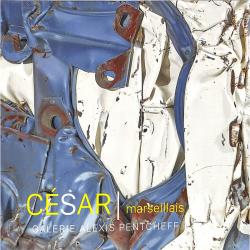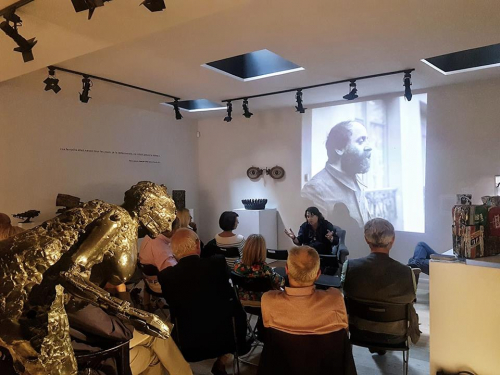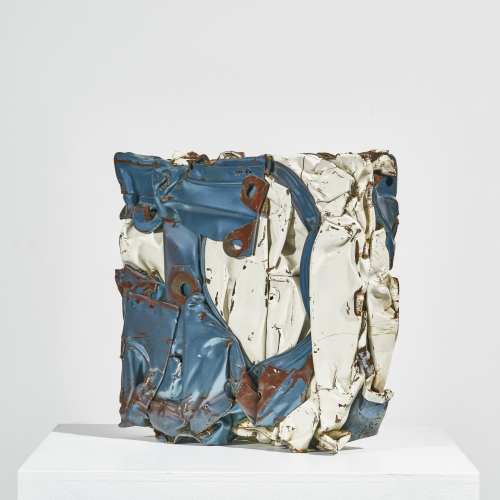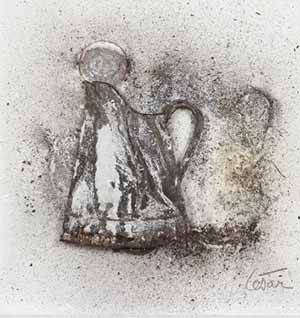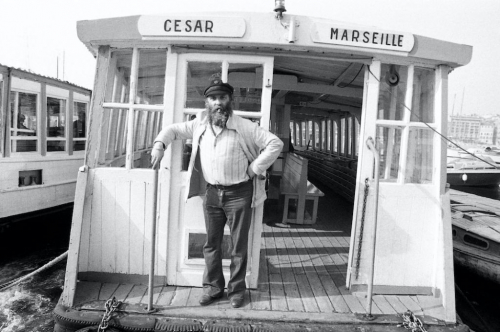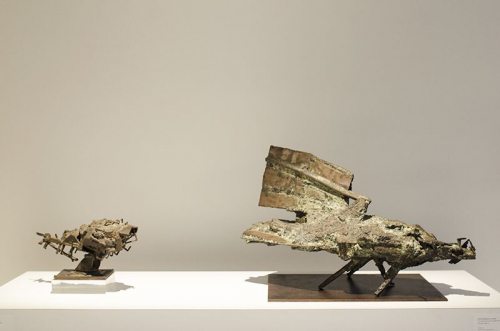César Baldaccini – The Sculptor of Raw Material
A Marseillais Childhood and Academic Training
César Baldaccini, known simply as César, was born in 1921 in the working-class Belle-de-Mai district of Marseille. He began his studies at the École des Beaux-Arts de Marseille before entering the École nationale supérieure des Beaux-Arts in Paris, where he studied until 1948. Trained in traditional sculptural techniques, César soon turned to recycled materials—not by aesthetic choice at first, but out of financial necessity. "Carrara marble was too expensive; scrap metal was everywhere. I became a sculptor because I was poor!" he later said.
Early Works and Recognition
In the late 1940s, his early sculptures—anthropomorphic and zoomorphic forms—were made of lead, plaster, and wire. By the early 1950s, he began experimenting with arc welding, and in 1954, he presented his forged iron "Sturgeon" at the Galerie Lucien Durand in Paris. The monumental piece, over three meters long, was acquired the following year by the Musée National d’Art Moderne, and earned him the Prix des Trois Arts. That same year, he moved his studio to an old metal furniture factory in Villetaneuse.
Compressions: A Radical Turning Point
In 1958, César discovered an American hydraulic press in a Gennevilliers scrapyard—a machine powerful enough to crush a car into a cube. Fascinated, he began producing his first “compressions,” works inspired by Duchamp’s readymades, in which he transformed everyday consumer objects into compact sculptural blocks. This radical and poetic form of urban recycling became his signature. In 1960, he exhibited his compressed cars at the Salon de Mai, and soon became one of the founding members of the Nouveau Réalisme movement, alongside Yves Klein, Arman, Jean Tinguely, Niki de Saint Phalle, and Daniel Spoerri.
Expansions, Anatomy and Happenings
While compressions made his name, César continued to innovate with his “expansions”—volumes of polyurethane foam that spread across the floor before solidifying. Often created in public, these works straddled the line between sculpture and performance art, with spectators sometimes invited to take fragments home.
He also explored the human body, using pantographic enlargement of anatomical molds. This technique gave rise to his iconic “Thumb” series, including a 12-meter-high version now standing on the Esplanade de La Défense in Paris.
Teaching, Recognition and Legacy
In 1970, César was appointed professor at the École des Beaux-Arts in Paris, a position he held until 1986. In 1976, he designed the trophy awarded at the César Awards for French cinema, creating its definitive compressed bronze form the following year—now a national symbol of artistic achievement.
In 1995, he represented France at the Venice Biennale, presenting his monumental sculpture "520 Tonnes", which occupied the entire first room of the French Pavilion. Art critic Pierre Restany praised César’s work as a “poetic recycling of the urban, industrial and advertising world.”
A Lasting Influence
César Baldaccini passed away in Paris in 1998. Twenty years later, in 2018, the Centre Pompidou honored him with a major retrospective, celebrating his bold creativity and role as a pioneering figure in contemporary French sculpture.
That same year, the Galerie Alexis Pentcheff in Marseille presented a special exhibition in his honor: "César marseillais", reaffirming the enduring connection between the artist and his native city.
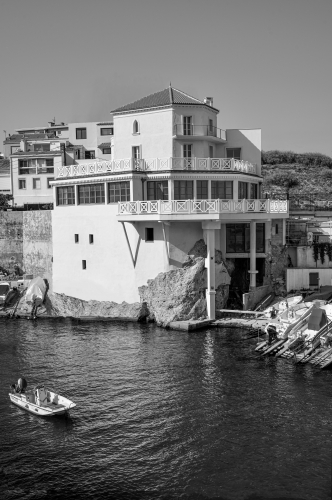
INAUGURAL EXHIBITION AT THE REINE JEANNE PAVILION
3 October 2023 - 15 November 2023

La Biennale Paris 2021
26 November 2021 - 5 December 2021
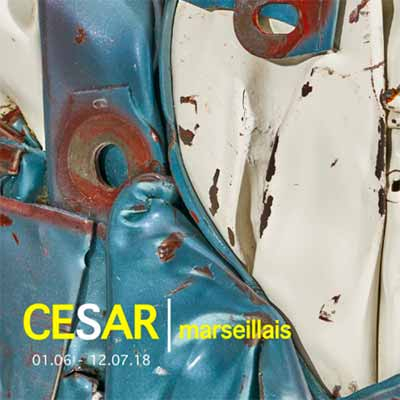
César
1 June 2018 - 12 July 2018

